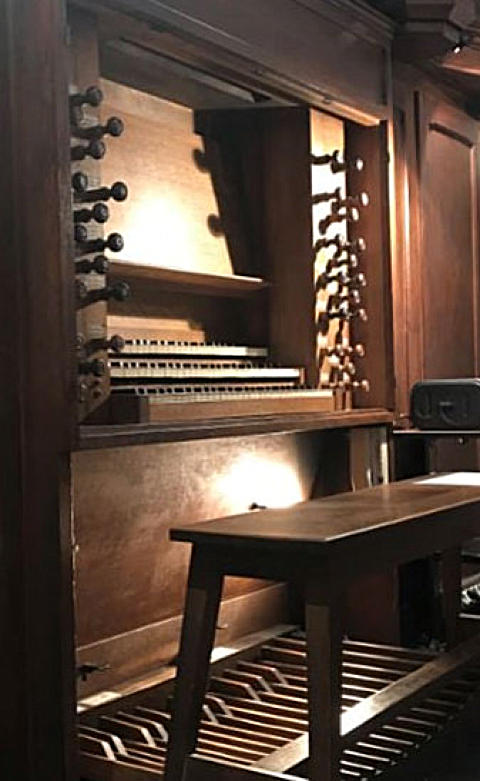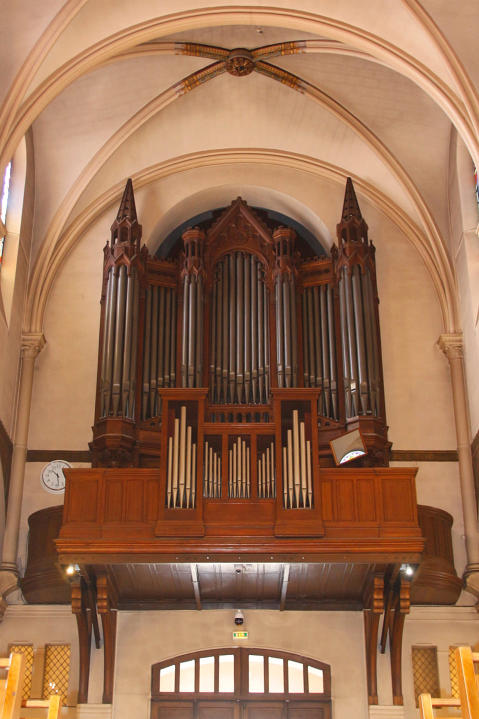


ORGANS OF PARIS © 2024 Vincent Hildebrandt HOME ALL ORGANS


Organiste titulaire
Vladimir Saakian Famous organist in the past: Auguste Schirlé (Erstein 1895-Paris ,1971) Concerts - Masses with organ Saturday 6:30 PM, Sunday 10, 11:30 AM and 6:30 PM Videos - Audio Auguste Schirlé Max Reger Te Deum source Photo buffet : Jeroen de Haan
A2
The first instrument of twenty stops on 2 keyboards with
pedal borrowed from the Grand-Orgue was installed by
Eugene and John Abbey (factors of English origin) in 1881.
There is almost no archive left on this original
instrument. Having become in very poor condition, it was
completely transformed and restored in 1964 by Muller.
Part of its piping was modified to make its stoplist richer
and the pedal was equipped with 5 independent stops
(funds of 16, 8, 8, 4 and a Basson 16).
Nearly fifteen years later, the instrument showed
worrying signs of degradation. Faced with the poor
condition of the wind chests and the transmission
system, the decision was taken to rebuild and enlarge the
organ in a classical style as already initiated during its
transformation in 1964, thanks to a large financial
contribution from the city of Paris, although this organ is
not classified. The reconstructed instrument is equipped
with 4 sound planes with the addition of a positive in a
new buffet in harmony with the main buffet, a new
console, a new wind tunnel and a fully mechanical
traction. The old piping was reused after adaptation and
re-harmonization.
The work was entrusted to Benoist and Sarélot who
delivered the new instrument at the end of 1980.
The current instrument is therefore of classical
aesthetics.
Text and photo console/pipes: Thierry Correard
Brochure inauguration
It is a chapel dedicated to Saint Henry that once
allowed Catholics in the area to attend services. In
1874, as the population had become too large, the
Archbishopiscopal Council decided to create a new
parish in the Picpus-Bel Air district. The land was
acquired by a benefactor of the parish who also
financed the construction. The building, dedicated to
the Immaculate Conception, was completed in 1875 on
the plans of the architect Édouard Delebarre de Bay.
The style of the church is Romanesque in inspiration.
The choir is embellished by beautiful paintings by the
artist Victor-Casimir Zier, whose other works can also
be seen in Saint Roch and Saint Louis des Invalides.
Beautiful stained glass windows, including a series of
saints, adorn the nave and choir. Finally, and on the
right side, one can admire a magnificent chair of neo-
Gothic style presenting Christ teaching, with to his right
King David and to his left Moses.
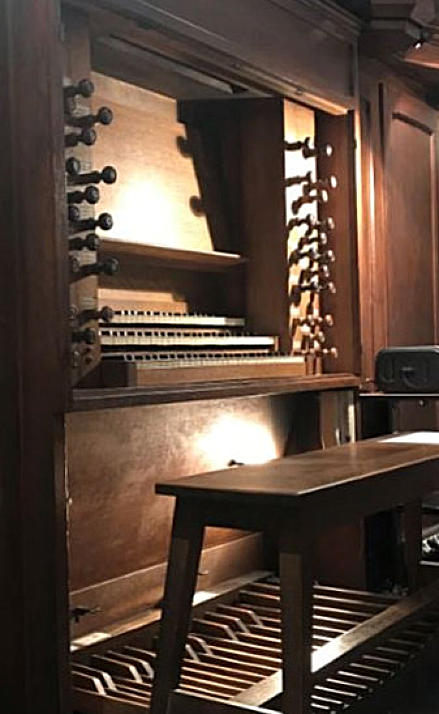
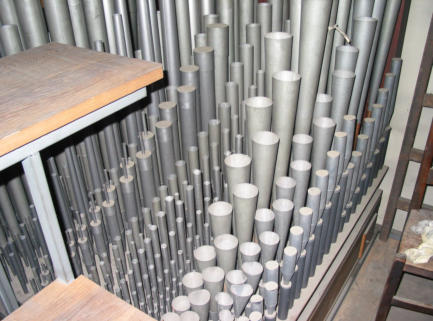
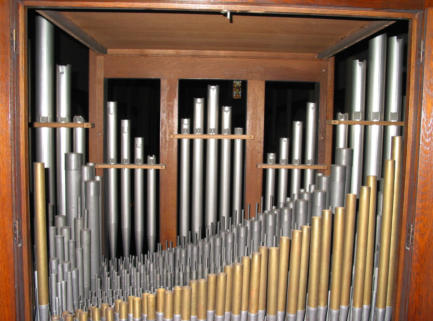
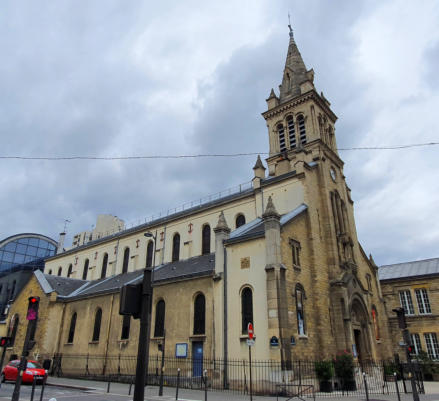
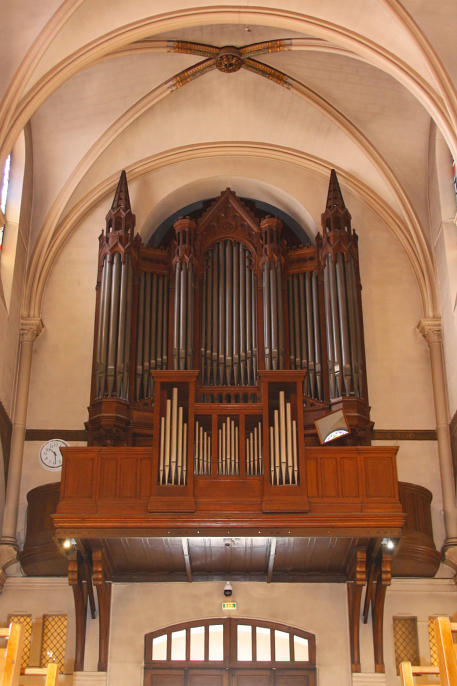
Organs of Paris
ORGANS OF PARIS © 2024 Vincent Hildebrandt ALL ORGANS
A2
The first instrument of twenty stops on 2 keyboards with
pedal borrowed from the Grand-Orgue was installed by
Eugene and John Abbey (factors of English origin) in 1881.
There is almost no archive left on this original instrument.
Having become in very poor condition, it was completely
transformed and restored in 1964 by Muller. Part of its
piping was modified to make its stoplist richer and the
pedal was equipped with 5 independent stops (funds of 16,
8, 8, 4 and a Basson 16).
Nearly fifteen years later, the instrument showed worrying
signs of degradation. Faced with the poor condition of the
wind chests and the transmission system, the decision was
taken to rebuild and enlarge the organ in a classical style as
already initiated during its transformation in 1964, thanks
to a large financial contribution from the city of Paris,
although this organ is not classified. The reconstructed
instrument is equipped with 4 sound planes with the
addition of a positive in a new buffet in harmony with the
main buffet, a new console, a new wind tunnel and a fully
mechanical traction. The old piping was reused after
adaptation and re-harmonization.
The work was entrusted to Benoist and Sarélot who
delivered the new instrument at the end of 1980.
The current instrument is therefore of classical aesthetics.
Text and photo console/pipes: Thierry Correard
Brochure inauguration
Organiste titulaire
Vladimir Saakian Famous organist in the past: Auguste Schirlé (Erstein 1895-Paris ,1971) Concerts - Masses with organ Saturday 6:30 PM, Sunday 10, 11:30 AM and 6:30 PM Videos - Audio Auguste Schirlé Max Reger Te Deum source Photo buffet : Jeroen de Haan